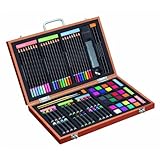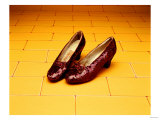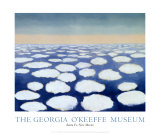|
One way to bring support to the educating process is to involve the surrounding neighborhood and/or district patrons in the life of the building by expanding the school walls into a gallery.
A curator is responsible for coming up with the creative theme for an exhibit, finding the venue, gathering resources and the preparation of art work for display. Every teacher reading this definition knows they curate already, so you have no need for panic about setting up a gallery for your school!
Much of the work of an exhibit are pure logistics - when and where. The key to a fun exhibit is making as many connections as possible with a theme that engages the viewers.
Here are a few ideas that could be appealing to children and adults with suggestions on how to gather art work on a budget.
THEMES
- Children - not necessarily children's art work, rather portraits and painting depicting children by famous artists, or pictures of famous people as children, and -
- children with pets
- children at play
- children with musical instruments
- children working
- children reading, or famous people reading
-
Shoes - just about everyone wears something on their feet for protection so the selection of foot wear can span centuries and cultures, giving you the opportunity talk about all the different things people do with their feet. The photograph is of the ruby slippers worn by Judy Garland in ‘The Wizard of Oz’.
- work and play shoes
- ballet slippers, tap shoes (here would be a good time to invite a dance school to give an “artist in residence” program)
- ice skates, roller skates, skis, art work on skate boards...
- anatomy posters of feet, why did the Chinese bind the feet of girls?
-
Hats (or hairstyles)- just to balance the shoes! Did you know the cone shape seen on the heads of people in Egyptian paintings were cones of wax and oil meant to melt in the heat and lubricate the skin?
- Eyes, Noses, Ears (or fingers, toes, hands, feet). Try photographing all the children in your class, enlarge just the eye(s) and mix in famous paintings of eyes, eye charts, and how eyes “work” (cameras too). Make as many connections as you can. [anatomy posters]
- Red, or Blue, or Green, or Yellow- build a theme around a color! Use Picasso as an example - he had a Blue period and a Rose period. [colors posters]
- Seasons - Spring, Summer, Fall or Winter - coordinate your art exhibit with the science for why seasons occur and social studies for cultural celebrations of seasonal changes.
-
Clouds- photograph your own clouds, display posters of Constable, El Greco, Homer, Lichtenstein, Magritte, O'Keeffe, Redon, Signac, Turner, Van Gogh, then invite your local weather person.
- Building and Bridges -
- famous building for reinforcing the study of a geographic area,
- create a virtual walking tour of the school neighborhood by photographing local buildings and landmarks, then enlarge architectural elements for display; arrange for a field trip for students to ID the location.
- Trees - go through your community and photograph trees that are notable for historic significance or unusual size or age, then display with famous artists depictions of trees and your students work. The theme could be further specialized for species of trees, trees that are used for food, or notable strength or flexibility like an oak or a willow.
- The Global PathMarkers - Set up a gallery featuring Einstein with science, Martin Luther King, Jr. for his birthday or February Black History Month, etc.
CREATING A COLLECTION -
Curators usually work for museums (though not always) and draw on the museum's permanent collections that have been built up over years by donations from collectors and purchasing artwork with funds from benefactors. There isn't a reason in the world why a school couldn't use the same mechanism to build a collection of images.
- The least expensive collection of images could be clipped from magazines and old calendars.
- Ask parents and patrons of your school and district to check their closets, attics and basements for appropriate images - and accept frames if they are offered.
- Check yard sales for images and don't overlook coffee table books - I don't normally advocate cutting up a book so look at its condition, age, availability, and your goal before removing pages - the book may be more valuable as a bound collection and that value could be translated as cash in an auction that then could fund the purchase of other items.
- Make a lend/borrow arrangement with fellow teachers and schools - my mother taught school for years and made scrapbooks of materials that were a fascinating look at 1930s illustrations.
- Check the local public library for artwork that is loaned out just like a book or video -
- Look to your students as contributors to a school collection: current pieces could be contributed by the student artist to the collection, find out if any former students are professional artists and request a donation; also neighbors and family artists.
- Exhibits also travel so perhaps a show could travel among buildings in a district with student artwork along the theme interspersed with that of famous artists -
- Make your own posters with PosteRazor software that enlarges and cuts a raster image into pieces which can be printed out and assembled to a poster. The free downloads are available for both Mac and PC. Please be sure you have permission to reproduce images.
EXHIBIT SPACE -
Every school / situation will present unique challenges- public and communial spaces like lobbies, hallways, cafeterias and libraries are obvious good choices for many people to pass by but may not give students time to reflect.
- One solution for having the best of both worlds might be to include one or two painting in the same theme in each classroom, and these could be rotated among classrooms and the main exhibit.
- If you are working with very young children use smaller images placed at their eye level - there are many famous painting reproduced as postcards.
- And you can exhibit online just like the big museums, archive the exhibit on CD; also send children home with a CD of the exhibit.
Prepare Art Work -
Art work should be protected for exhibit. The usual way is to matte and frame, however your “collection” may benefit from lamination, particularly paper from magazines. This is a judgement call you will need to make based on the item and where it will be exhibited.
Prepare the Viewers -
 Museums offer educational support materials and pre-exhibit seminars for educators when they have a large exhibit or traveling show. You can prepare your fellow staff with a short presentation on the chosen theme, have an article for the school newsletter, make signs and labels for the work. Museums offer educational support materials and pre-exhibit seminars for educators when they have a large exhibit or traveling show. You can prepare your fellow staff with a short presentation on the chosen theme, have an article for the school newsletter, make signs and labels for the work.
A few ;-) years ago this preparation was rewarded with a remark overheard between several of my students as they stood in front of “Le Loge” by Pierre August Renoir in the Courtauld Exhibit of Impressionist painting when the show was at the Nelson-Atkins Museum of Art in Kansas City. One sophomore girl whispered to another “Oh look, the white is blue! This is so much better than I thought it would be.” (in reference to the use of blue to create depth and shadow in the folds of the young woman's dress).
|







 Museums offer educational support materials and pre-exhibit seminars for educators when they have a large exhibit or traveling show. You can prepare your fellow staff with a short presentation on the chosen theme, have an article for the school newsletter, make signs and labels for the work.
Museums offer educational support materials and pre-exhibit seminars for educators when they have a large exhibit or traveling show. You can prepare your fellow staff with a short presentation on the chosen theme, have an article for the school newsletter, make signs and labels for the work.